- Show results for
- Share
Tensiometer Work Principle For Soil Moisture Measurement
Resource Description

Using Tensiometers for Soil Moisture Measurement
Soil moisture is an important component of the atmospheric water cycle in both small agricultural scale and large scale terrestrial/atmospheric modeling. Vegetation and crops are always more dependent on moisture conditions at the root level than on precipitation. Water budgeting for irrigation planning as well as actual scheduling of irrigation activities requires local information about the moisture in the soil. The availability of information on the degree of soil moisture helps to understand the onset of convection and predict the risk of flash floods or fog formation.
Tensiometer. Brief Description
The measurement of soil moisture potential at different depths can be carried out by the most widespread method using a tensiometer. It is a simple instrument, typically consisting of a porous ceramic tip and a sealed plastic cylindrical tube connecting the reservoir to a defined pressure recording device - gauge - at the side of the cylinder. These instruments are often scaled from 0 to (-)100 centibars (or other pressure units). In practice, their readings range from 0 (fully saturated soil water) to (-)60 - 70 centibars (1 centibar corresponds to 1kPa or 10mbar).
| Important To Know! Do not touch the tip with bare hands as the oil from your fingertips can block the pores in the ceramic. |
Soil Moisture Measurement
Stage 1 - Preparation Before Use
 |
|
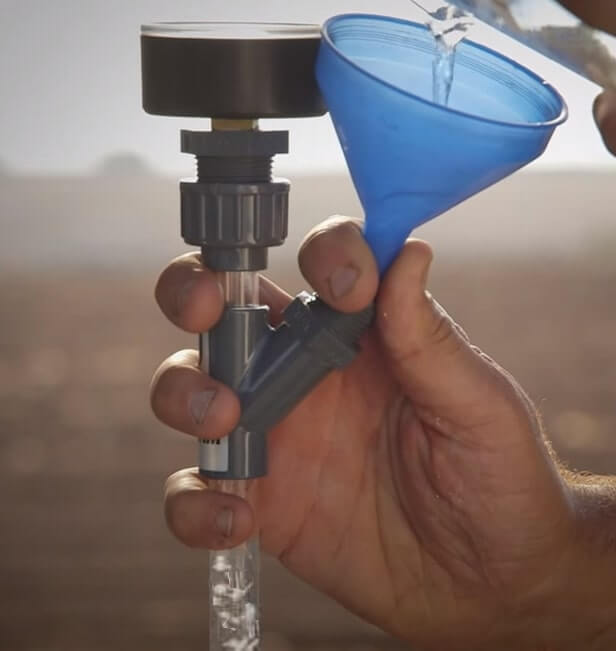 |
To prevent any air from entering the tensiometer, keep the ceramic tip immersed in a bucket of water or wrapped in a wet rag.
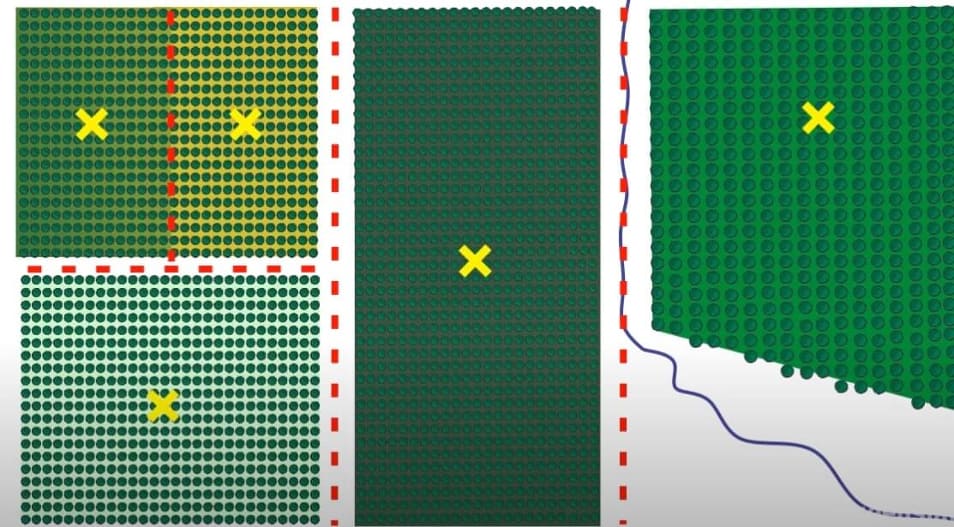
Stage 2 - Place Selection
It is important to find a suitable monitoring site before installation.
The number of monitoring sites depends on the amount of variation in your orchard. There may be different types of soil, tree ages, irrigation delivery rates, and so on. Within each section, select the monitoring site that best represents the entire section.
Stage 3 - Installation

- Mark the required depths on a solid bar and make a hole in the ground.
| NOTE The hole should be a similar diameter to the tensiometer. Otherwise, it will be time-consuming to fill the surrounding area with soil and your readings may not be accurate. |
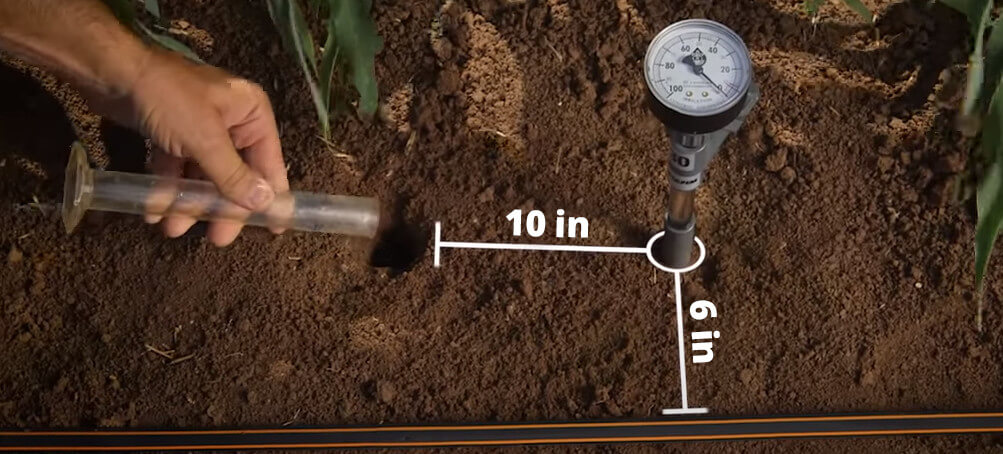
- Add loose soil and water to the bottom of each hole.
- Insert the tensiometer and ensure adequate contact between its tip and the soil.
| NOTE Never push on the gauge. To insert the tensiometer into the hole, you can press on the reservoir cap. |
- Fill the hole with loose soil. Make a slight mound of soil around the tensiometer to prevent surface water from flowing down the outside of the tube to the tip which can lead to false readings.
- The distance between tensiometers should be 25 cm.
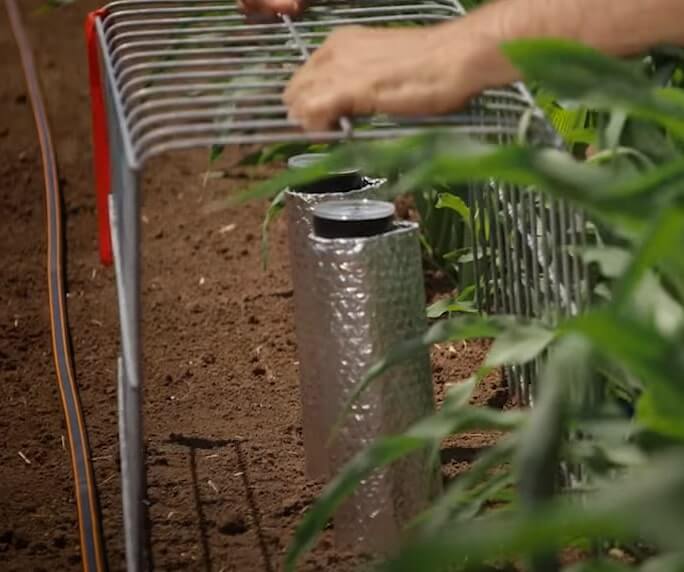
Stage 4 - Tensiometer Protection
1. Place radiation protection over each tensiometer.
2. Mark the location to protect the tensiometers from physical hazards or pickers. You can do it the way you like, or not at all.
Stage 5 - Interpretation & Maintenance
- Wait 12 hours before taking initial readings.
- Use a tensiometer higher to the surface for irrigation triggering.
- A few days later the air may appear in the tube. Use a service unit (vacuum pump) to remove any air bubbles and refill with water if required.
Once settled, the readings should rise with dry weather and fall again with irrigation or rainfall.
| NOTE If the tensiometer is always losing its vacuum and there's no end to the air bubbles when you use a vacuum pump, then it's possible that the soil is too dry or there are air gaps between the instrument and the soil. It may also mean that the soil is too sandy for the use of tensiometers. |
Things To Know
Tensiometers should be read daily. During the cooler months, this interval can be extended to once every three days.
These measuring instruments are mainly used to decide when to start and stop watering. It is better to install them at different depths (for example, 20 cm and 40 cm). According to the tensiometer readings, it is possible to determine:
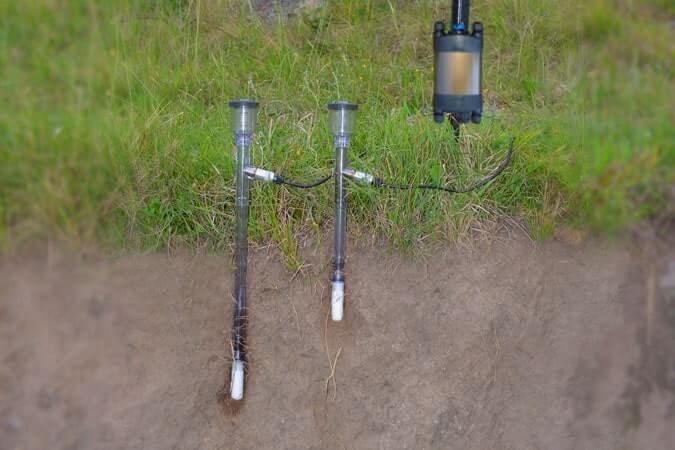
• the start time of irrigation - based on the tensiometer readings located closer to the surface.
• the end time of irrigation - according to the one located deeper.
• The duration of this irrigation will vary based on the local conditions such as depth of mulch, soil type, etc.
• It is recommended that you begin watering when the shallow tensiometer reaches between 15 and 20 kiloPascals and stop irrigating when the gauge reads zero.
• If applying deep irrigation, designed to replenish deeper moisture reserves, stop irrigating when the gauge on the deep tensiometer starts to decrease.
The duration of this irrigation will vary based on the local conditions such as depth of mulch, soil type, etc.
- It is recommended that you begin watering when the shallow tensiometer reaches between 15 and 20 kiloPascals and stop irrigating when the gauge reads zero.
- If applying deep irrigation, designed to replenish deeper moisture reserves, stop irrigating when the gauge on the deep tensiometer starts to decrease.
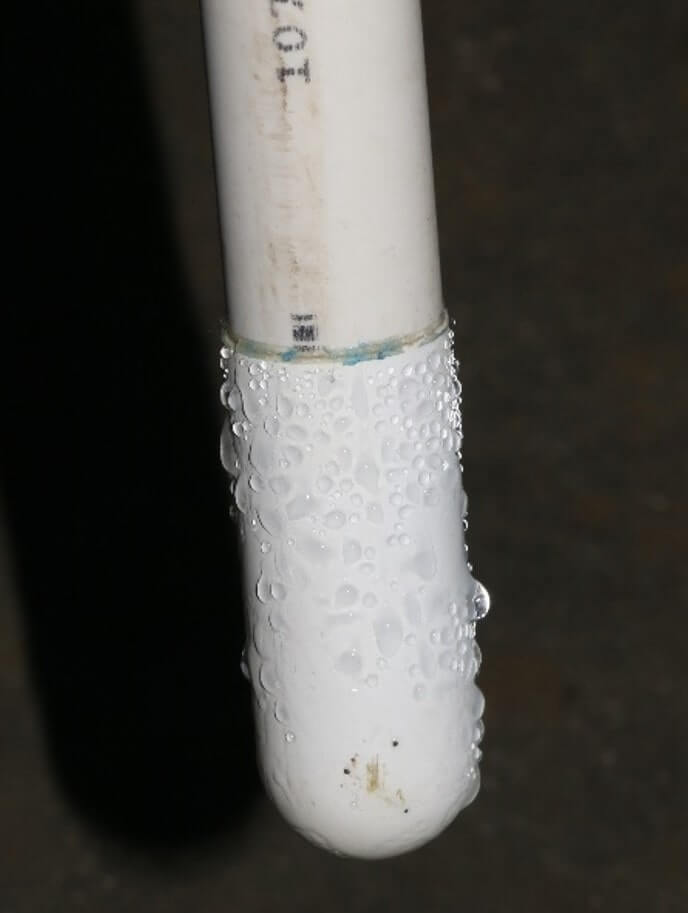
The Working Principle of a Tensiometer
The tensiometer acts like a root, whereas its ceramic tip interacts with the soil, emitting water when it is dry. When the water leaves the tube, a measurable pressure is generated and displayed on a gauge attached to the top of the instrument.
New Era Of Tensiometers
A tensiometer underwent changes due to the emergence of modern innovations and technologies. Whereas earlier you had to walk every day to observe tensiometers and keep records, now you can manage moisture measurement, water quality, data logging with remote access from the office or home. Nowadays, it is much easier to increase crops, save resources, and plan irrigation.
At Mega Depot, our customers can find a wide range of high-quality products from Irrometer.



